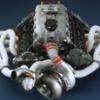Announcements
-
Similar Content
-
Latest Posts
-
By Patrickxdf · Posted
Hi! Is it possible to use and swap the RB25DET/RB25Neo manual gerbox on to my RB20DE Neo engine with an automatic transmission? -
By funkymonkey · Posted
my current daily - BiTurbo Diesel SQ5 8R with a remap and some light cosmetic mods. Which is sitting in front of my old daily that hasn’t been driven in 7 years now, home to numerous redbacks no doubt. MK4 Golf GTI with a boser hood extension, air ride airbag suspension, factory RHD Xenon’s from the Japanese R32 and stubby electric mirrors (also from Japan) sitting on custom made 18x10” Work Meisters for the golf’s bolt pattern and offset. one day I’ll revive it as a project, pull the engine out, put some forged bits in, chuck a big turbo on it and tune it to somewhere around 250kw and call it a barn find to make millions off YouTube views. Till then, it is a good breeding home for redbacks and the boot is good for storing my Christmas tree for 11 months of the year. -
By funkymonkey · Posted
Thanks for jumping in guys, suggested @Sbluatx post here for help. Was hoping one of the guys with a RWD stages could confirm if the tank was the same as the AWD one -
By Chris_Guthrie · Posted
I got another MAF and installed it. Idle misfire was still present. Finally got the tank low enough to refuel and did so. Did a short drive to warm the car up and no issues, pretty short drive. Going to attempt soon to take a longer drive to see. I don't think the MAF fixed it if anything, definitely thinking it was fuel related. As soon as I put fresh fuel in the car felt so much better. But, still need a longer test drive to verify. I'll report back once done. I'm definitely going to be getting monitoring and tuning parts soon as my next upgrade (decided on the link after talking with my tuner), just been real tight with just purchasing the car and sudden onset of issues. I've also ordered a new exhaust stud kit and gasket to fix that obvious problem. Once it's back up to par I'll start with the goodies -
Meant it’s 2WD. And my tank is cracked.
-






Recommended Posts
Create an account or sign in to comment
You need to be a member in order to leave a comment
Create an account
Sign up for a new account in our community. It's easy!
Register a new accountSign in
Already have an account? Sign in here.
Sign In Now